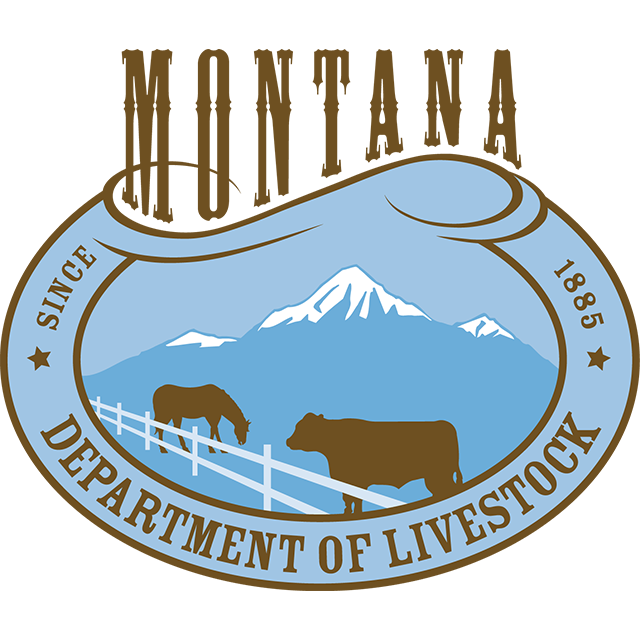
Here to serve the people of Montana and its livestock industry.
Resources
UPDATE ON ANIMAL DISEASE TRACEABILITY RULE EFFECTIVE NOVEMBER 5, 2024
In April 2024, the U.S. Department of Agriculture’s (USDA) Animal and Plant Health Inspection Service (APHIS) announced the final rule that amends and strengthens its animal disease traceability regulations for certain cattle and bison. This rule will come into effect on November 5, 2024. It requires official ear tags to be visually and electronically readable for official use for interstate movement of certain cattle and bison. It also revises and clarifies certain record requirements related to cattle. Learn more about traceability information from the USDA website.
Please see the information below for more information regarding this ADT rule.
Myth Busters - The Facts about Animal Disease Traceability
Frequently Asked Questions - ADT Traceability Rule
840-RFID Tag Approved Manufacturers
Common RFID Tag Applicator Options
Non-840 Tags for Non-US Origin Cattle and Bison
CATTLE AND BISON
Traceability Requirements for Cattle Imported into Montana
OFFICIAL IDENTIFICATION REQUIREMENTS:
- Sexually intact animals 18 months of age and over
- Used for rodeo or recreational events (any age)
- Used for shows or exhibitions (any age)
- Dairy cattle
ACCEPTABLE FORMS OF OFFICIAL IDENTIFICATION:
- An official ear tag (840-RFID tag or Non-US Origin Country of origin RFID tag)
-
EXEMPTIONS TO OFFICIAL IDENTIFICATION REQUIREMENTS INCLUDE ANIMALS MOVED:
- As a commuter herd with a copy of the commuter herd agreement between shipping and receiving states.
- Directly from a location in one State through another State to a second location in the original State.
- Directly to an approved tagging site and are officially identified before commingling with cattle and bison from other premises.
- Directly to a recognized slaughtering establishment or directly to no more than one approved livestock facility and then directly to a recognized slaughtering establishment, where they are harvested within 3 days of arrival AND they are moved with a USDA approved backtag.
DOCUMENTATION REQUIREMENTS:
- Directly to a recognized slaughtering establishment, or to an approved livestock facility and then directly to a recognized slaughtering establishment, and they are accompanied by an owner-shipper statement.
- Directly to an approved livestock facility with an owner-shipper statement and do not move interstate from the facility unless accompanied by an ICVI.
- From farm of origin for veterinary medical examination or treatment and returned to farm of origin without change of ownership.
- Directly from state through another state and back to the original state.
HORSES AND OTHER EQUINE SPECIES
OFFICIAL IDENTIFICATION REQUIREMENTS:
ACCEPTABLE FORMS OF OFFICIAL IDENTIFICATION:
- A description sufficient to identify the individual equine including, not limited to, name, age, breed, color, gender, distinctive markings, and unique and permanent forms of identification when present (e.g., brands, tattoos, scars, cowlicks, blemishes or biometric measurements).
- ISO compliant electronic identification (e.g., microchip).
- Non-ISO electronic identification injected to the equine on or before March 11, 2014.
- Digital photographs sufficient to identify the individual equine.
- A device or method authorized in 9 CFR Part 88 for equines being commercially transported to slaughter.
EXEMPTIONS TO OFFICIAL IDENTIFICATION REQUIREMENTS INCLUDE ANIMALS MOVED:
- Used as the mode of transportation for travel to another location and then returning directly to original location.
- Moved from the farm of origin for veterinary medical examination or treatment and returned to the same location without change of ownership.
- Moved directly from a location in one State through another State to a second location in the original state.
- They are moved between shipping and receiving States with another form of identification as agreed upon by animal health officials in the shipping and receiving States.
DOCUMENTATION REQUIREMENTS:
- As the mode of transportation (horseback, horse and buggy) for travel to another location and then return direct to the original location.
- From the farm or stable for veterinary medical examination or treatment and returned to the same location without change in ownership.
- Directly from a location in one State through another State to a second location in the original State.
- Between shipping and receiving States with documentation other than an ICVI, e.g., an equine infectious anemia test chart, as agreed to by the shipping and receiving States involved in the movement.
ICVIS FOR ALL ANIMALS MUST INCLUDE THE FOLLOWING INFORMATION:
- Species covered
- Number of animals in shipment
- Purpose for movement
- Physical address from which animals originated
- Physical address that animal are destined to
- Name and address of consignor and consignee (if different)
- For animals that are required to be officially identified, the official identification number must be recorded on the ICVI unless animals are moved from an approved livestock facility directly to slaughter